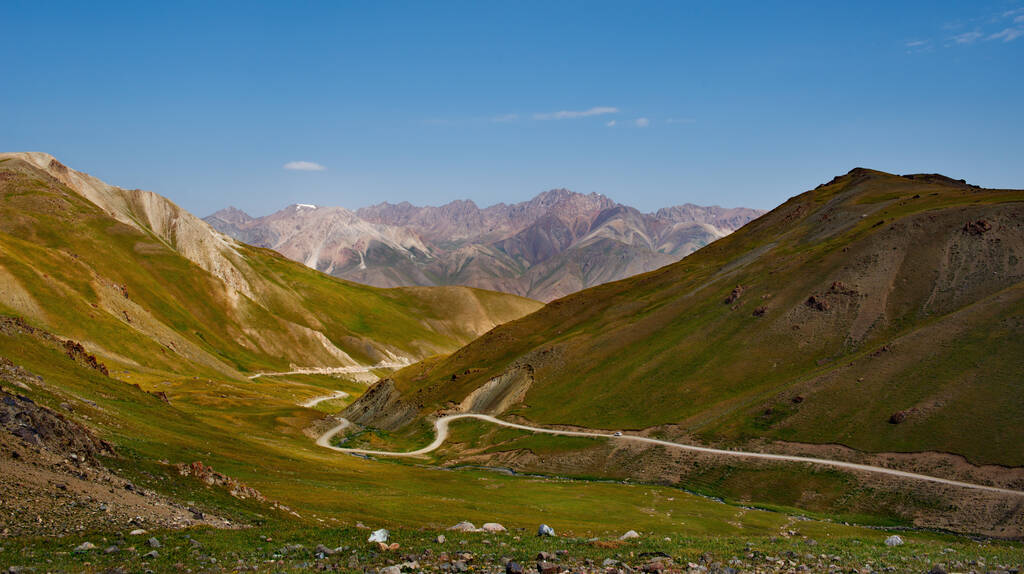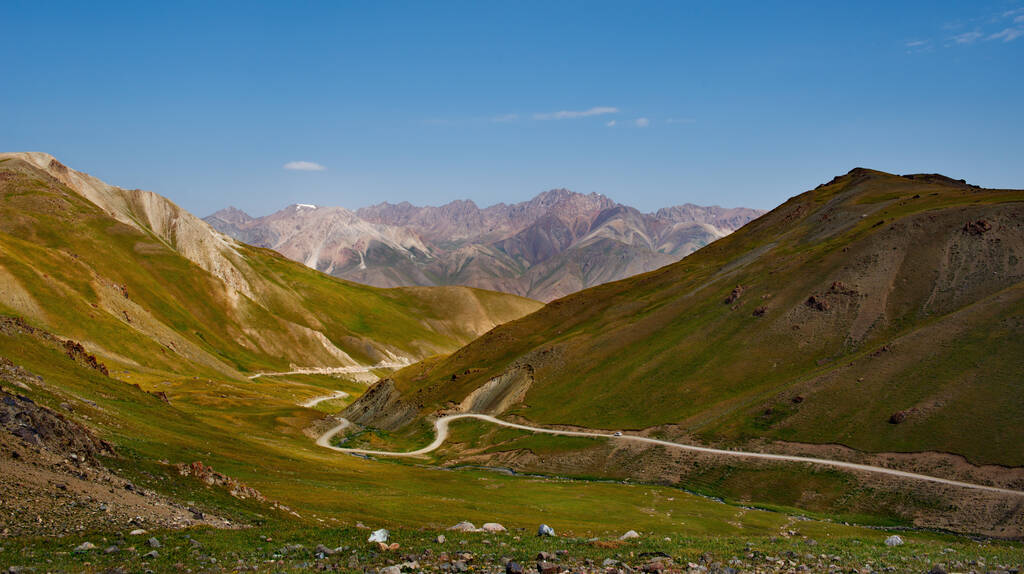Jalalabad, the capital of Nangarhar Province in eastern Afghanistan, is a vibrant city rich in history and culture. Nestled in a valley at the foot of the Hindu Kush mountains, Jalalabad has long served as a crucial economic and cultural hub. Its strategic location along the historic Silk Road has made it a melting pot of diverse influences, contributing to its unique character as one of Afghanistan’s most fascinating cities.
A Historical Overview
Jalalabad’s history stretches back over 2,000 years, making it one of the region’s oldest inhabited areas. The city is believed to have been founded by Jalal ad-Din Muhammad, a prominent leader of the Khwarazmian dynasty, and has been known by several names throughout its history, including Ghazni and Alam Khan.
Over the centuries, Jalalabad has witnessed the rise and fall of various empires, including the Persian Empire, the Mauryan Empire, the Sassanian dynasty, and the Mongol invasions led by Genghis Khan. Its position as a trade route facilitated cultural exchanges and economic prosperity. During the time of the Mughals, Jalalabad flourished as a center for arts and architecture, leaving behind a legacy of beautiful structures.
The semi-arid climate of the region has also fostered a unique landscape, characterized by lush green fields and orchards, particularly known for pomegranates and other fruits. The fertile land surrounding the city has traditionally supported agriculture, enhancing its economic significance.

Cultural Heritage
It is a cultural mosaic, home to a diverse population that includes Pashtuns, Tajiks, and other ethnic groups. This diversity is reflected in the local customs, traditions, and daily life of its residents. Dari and Pashto are the primary languages spoken, with both cultures influencing the city’s identity.
One of the defining features of Jalalabad’s culture is its rich oral tradition, including poetry, storytelling, and folk music. The Rubab, a traditional Afghan string instrument, is often heard in the streets during celebrations and community gatherings. The music of Jalalabad captures the spirit of the people, expressing their emotions, hopes, and resilience.
It is also famous for its handicrafts, including beautifully woven carpets, pottery, and intricate jewelry. Local bazaars buzz with activity, offering visitors a vibrant shopping experience. From fruits to traditional garments, these markets provide insight into the daily life and economic activities of the city.
Major Attractions
Jalalabad boasts several historic and cultural landmarks worth exploring. One of the most significant is the Tomb of King Jalal-ud-din, a revered figure who played a remarkable role in defending the region. His final resting place is a site of pilgrimage and reflects the deep historical roots of the area.
Another notable landmark is the Shah Ali Baba Shrine, a sacred site for many locals. It is believed to have healing properties and attracts many visitors seeking blessings through prayer and ritual.
The Kabul River flows through Jalalabad, providing a beautiful natural backdrop to the city. The riverside area has been developed into a popular recreational space where families gather, especially during the warm months. The scenery along the river, with its lush greenery and vibrant flowers, is a testament to the valley’s agricultural heritage.
The surrounding countryside is also dotted with ancient fortifications and remnants of past dynasties, where enthusiastic historians and adventurers can explore the architectural marvels that tell the story of Jalalabad’s past.
Economic Activity
Jalalabad has historically been a center of trade and commerce, benefiting from its favorable position along trade routes connecting Afghanistan to neighboring countries like Pakistan. The city serves as a regional marketplace for goods ranging from textiles to agricultural products, creating a vibrant economic landscape.
Agriculture remains a cornerstone of Jalalabad’s economy. The fertile soil and favorable climate allow for the cultivation of a variety of crops, including pomegranates, grapes, and various vegetables. Local farmers take pride in their produce, and the city hosts markets showcasing its agricultural bounty.
More:Read about on Panjshir Valley: The Majestic Stronghold of Afghanistan
In recent years, there have been efforts to develop Jalalabad’s economy further through entrepreneurship and investment. Small and medium-sized enterprises (SMEs) are emerging, leveraging local talent and resources to create jobs and stimulate growth. The potential for eco-tourism also exists, given the region’s natural beauty and rich cultural heritage.
Contemporary Challenges
Despite its historical significance and cultural richness, Jalalabad faces a range of contemporary challenges. The region has experienced significant upheaval due to decades of conflict, which have left deep scars on its infrastructure and social fabric. Security concerns remain, and sporadic violence has created an atmosphere of uncertainty.
The resurgence of the Taliban and ongoing political instability have posed additional challenges to the people of Jalalabad. The shifting power dynamics in Afghanistan have affected local governance and access to essential services such as education and healthcare.
Despite these challenges, the resilience of the people of Jalalabad shines through. Communities are coming together to rebuild their lives, and many local organizations are working to provide support in education, vocational training, and healthcare services. Efforts to promote gender equality and empower women are also gaining momentum.
Education and Empowerment
Education is a critical focus for the people of Jalalabad, particularly for the youth. Local leaders and communities continue to prioritize access to education, understanding its importance for individual and societal development. Schools are working to provide quality education, especially for girls, who have historically faced barriers.
Vocational training programs are also taking root, equipping individuals with essential skills to enhance their employment prospects and contribute to the local economy. The commitment to education and skill development is vital for the future of Jalalabad, empowering the new generation to overcome challenges and seize opportunities.
The Path Forward
The future of Jalalabad depends on stability, community engagement, and investment in development projects. Prioritizing infrastructure development, healthcare, and education will create a solid foundation for sustainable growth. The resilience of the people of Jalalabad can be harnessed to drive positive change in the region.
More: Wanted to download Odisha Magazines, visit here
International support and partnership can also play a critical role in fostering development and stability. Supporting local initiatives, promoting cultural exchanges, and investing in community-driven projects can enhance the prospects for Jalalabad’s future.
Conclusion
Jalalabad is a city that embodies the rich history and vibrant culture of Afghanistan. From its ancient roots to its contemporary challenges, Jalalabad stands as a symbol of resilience and hope. The beauty of its landscapes, the warmth of its people, and the depth of its culture contribute to its unique identity.

As the city navigates its challenges and embraces opportunities for growth, the spirit of Jalalabad remains unbroken. With continued efforts in education, community development, and collaboration, this gem of eastern Afghanistan has the potential to shine even brighter in the years to come.
Jalalabad: The Gem of Eastern Afghanistan
Where is Jalalabad located?
Jalalabad is situated in eastern Afghanistan, approximately 150 kilometers east of Kabul, near the confluence of the Kabul and Pech rivers.
What is the best time to visit Jalalabad?
The best time to visit Jalalabad is during spring (March to May) and autumn (September to November) when the weather is mild and pleasant for outdoor exploration.
How can I reach Jalalabad?
You can reach Jalalabad by road from Kabul, with options including private taxis, buses, or organized tours. The journey typically takes around 2-3 hours.
Is Jalalabad safe for tourists?
While Jalalabad has seen improvements in security, safety conditions can vary. It’s essential to stay informed about the current situation and follow travel advisories from your government.
Are there accommodation options in Jalalabad?
Yes, Jalalabad offers various accommodations, ranging from hotels to guesthouses. It’s advisable to book in advance, especially during peak travel seasons.
What is the cultural significance of Jalalabad?
Jalalabad has a rich history and has served as a cultural crossroads for centuries. The city’s diverse population and historical landmarks reflect its significance in Afghanistan’s heritage and resilience.

